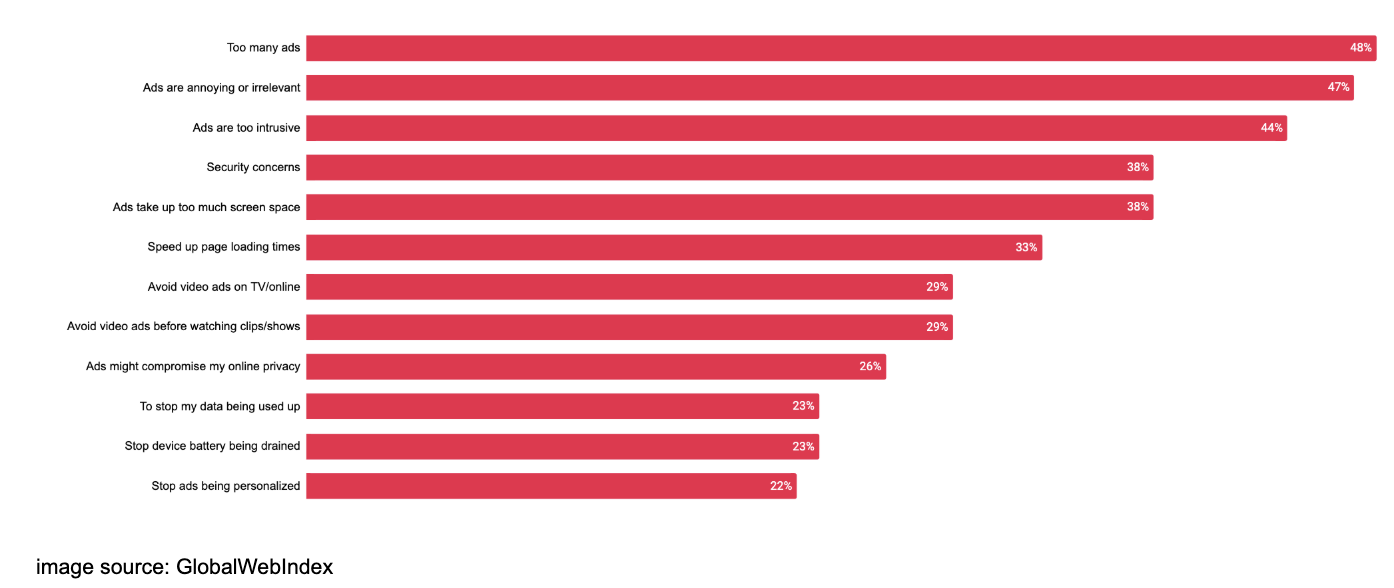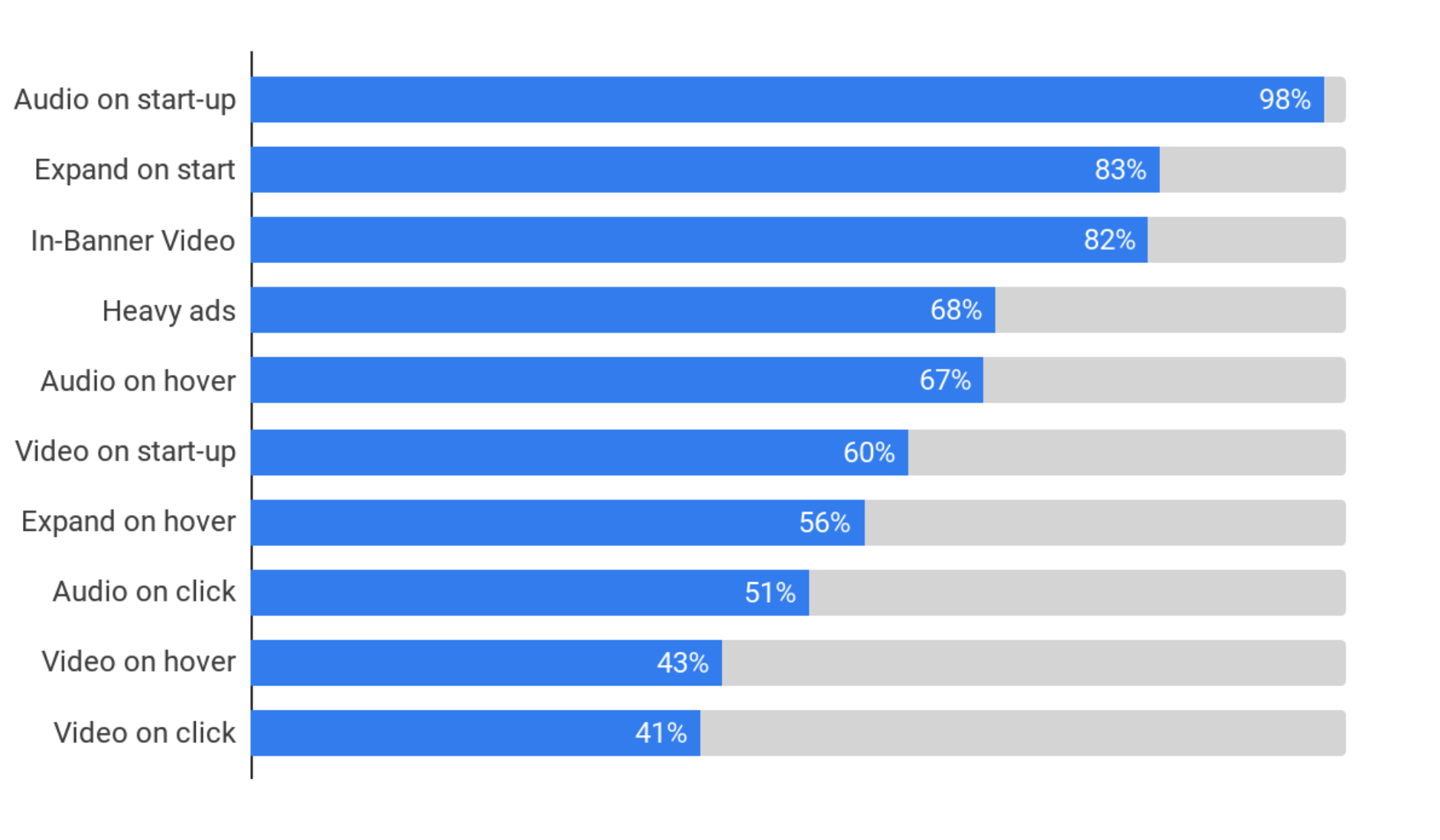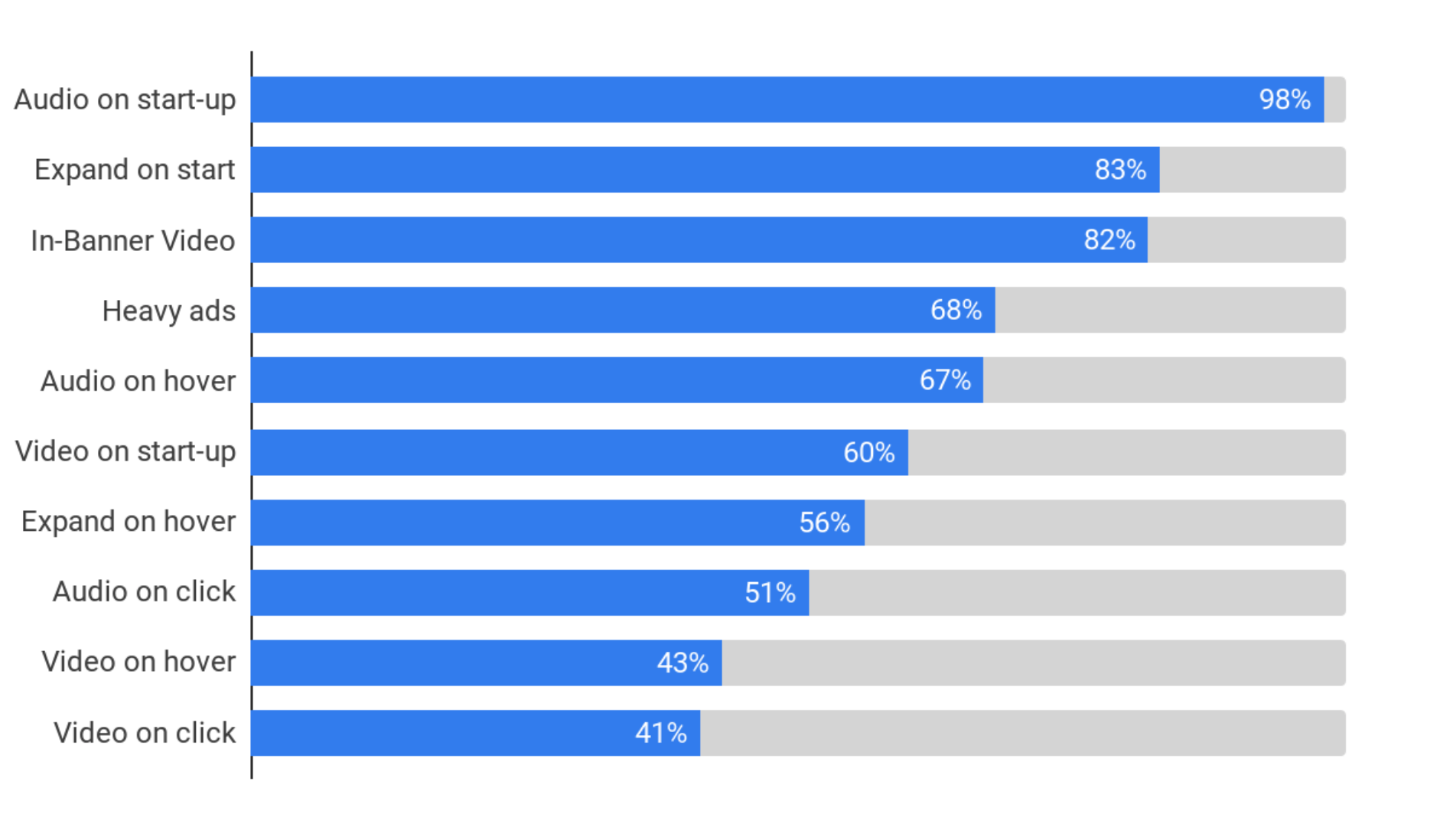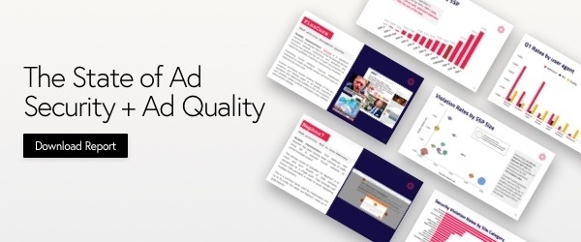It will come as no surprise to digital publishers that in 2020 ad blockers remain a top cause of revenue loss. Users are installing ad blockers at an alarming rate. AdBlock, one of the best-known ad blocker extensions for Google Chrome, has over 100M users.

Publishers are expected to lose $12.12 billion in 2020 due to ad blockers, up sharply from $3.89 billion in 2016. Digital ads enable free access to a rich array of content for users, but the ecosystem that supports this has been abused by malvertisers and polluted by disruptive and annoying ads. Naturally, fed-up with the poor ad experience, users have taken matters into their own hands by installing ad blockers.
What is ad experience?
Ad experience describes the interplay between ads and users. It answers the fundamental question of whether ads complement or disrupt the overall user experience. Ad experience takes into account an ad’s:
- Safety (malicious code; forced redirects; use of deceptive tactics)
- Behaviors (audio on/off, video, interactivity, etc.)
- Suitable for your audience (category and subject matter; imagery)
- Data usage (privacy; data leakage)
A user’s reaction to an ad is driven by these factors. Users can react to ads in vastly different ways, ranging from tolerance to engagement to outright disgust. Only by controlling the ad experience can publishers ensure the user experience is a positive one.
According to research by GlobalWebIndex, users install ad blockers for the following reasons:

As the chart demonstrates, users install ad blockers because they wish to avoid disruptive, dangerous, or invasive ad experiences. This is a wholesale indictment of digital advertising. As an industry, how could we have allowed the ad experience presented to users to get so bad that millions of users have gone to the trouble of installing ad blockers? Clearly, there must be a better way to balance the needs of publishers, platforms, and users.
How publishers are taking back control:
While responsibility for ad quality should be shared by all participants in the ecosystem, the unfortunate reality is that publishers bear most of the risk. If a user encounters a bad ad, they blame the publisher, not some unseen platform operating behind the scenes. Publishers also face the direct revenue impact caused by ad blockers. Publishers should continue to hold their platform partners accountable, but they also need to take advantage of opportunities to reassert control. With the advent of real-time ad-quality solutions that verify every single impression, publishers are finally able to take control and protect against security, quality, and suitability threats.
As the inventors of real-time ad verification, Confiant gives publishers insight into and control over every creative in their supply chain. We also give publishers the ability to monitor for quality issues in accordance with their business needs and block specific ad behaviors in order to improve their user experience.

This chart summarizes the rate at which our publishers activated various rules for blocking across all impressions monitored by Confiant in Q4 2019. The data shows that blocking activation rates tend to be higher for automatic creative behaviors (e.g. Audio on start-up) than those requiring user action (e.g. Audio on click). This aligns with users’ concerns about annoying and intrusive ads,, which account for 47% of why users install ad blockers. By removing these annoyances, publishers are able to improve the overall experience for their users, keep them on page longer, and convince those using ad blockers to whitelist the site.
In Conclusion
Publishers cannot afford to take a passive stance when it comes to ad experience. Every ad served must be verified as safe, non-disruptive, and respectful of user privacy so that it complements the overall experience the user has with your site. Maintaining a high-quality ad experience needn’t be difficult. With the right solution in place, publishers can quickly identify and fix issues, and keep users coming back to their site year after year.









